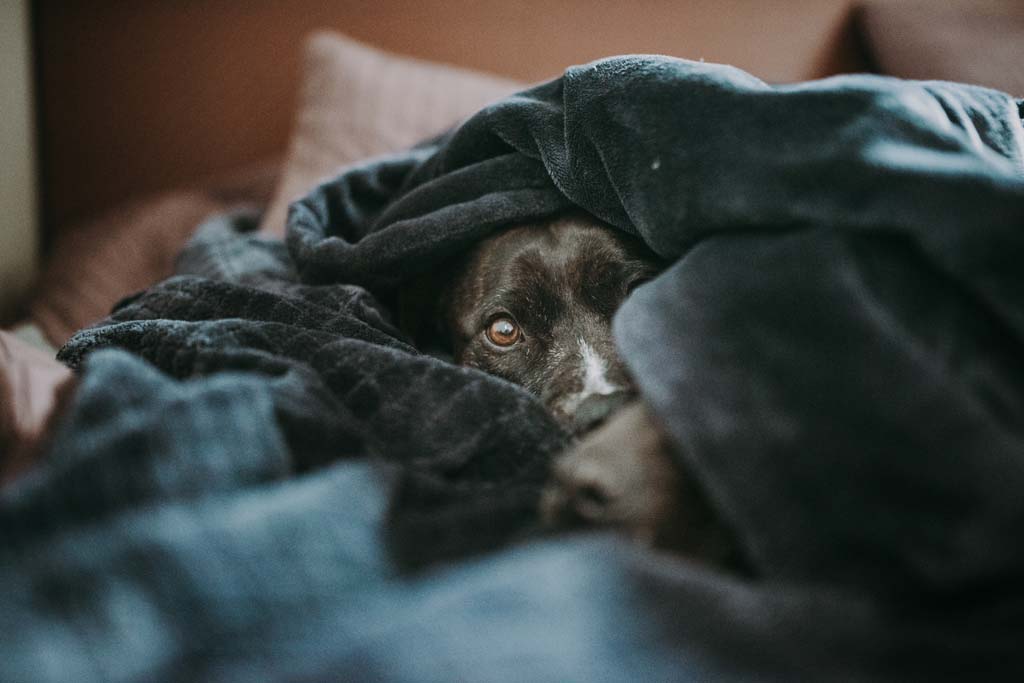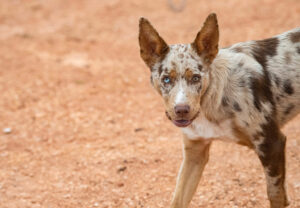Although dog muzzles may have a negative connotation, they can actually be extremely helpful and are even sometimes required by law. In certain situations, such as veterinarian visits or dog grooming appointments, wearing a muzzle can prevent biting and ensure the safety of both the dog and those handling them.
But it’s important to note that muzzles should only be used for short periods of time and never as a punishment. Keeping your dog comfortable and properly introducing them to wearing a muzzle is crucial in ensuring their well-being.
In this article, we’ll discuss the benefits of dog muzzles, when they should be worn, and how to choose the right one for your dog.
Table of Contents
ToggleWhat Is a Dog Muzzle?
A muzzle is a tool that is placed over the snout of a dog. It is fastened securely in place and prevents the dog from unwanted biting, scavenging (yes, plenty of dog owners muzzle their dogs on walks so that they don’t put unwanted items into their mouths), or wound licking.
They should fit snugly but not too tightly and should allow the dog to breathe easily.
Muzzles should only be used when necessary, and should never be left on a dog unsupervised. If you are considering using a muzzle, please consult with a professional trainer or behaviourist first.

Do Muzzles Make Dogs Calmer?
If you’re considering muzzling your dog to reduce bite risk, you’ll find that there’s a lot of debate out there about whether or not muzzles make dogs calmer. Some people say that they do, while others swear that muzzles just make dogs more anxious.
So, what’s the truth?
Here’s the thing:
Muzzles can help to calm some dogs down, but they’re not a magic solution for all dogs. And, in some cases, muzzles can make dogs more anxious.
It really depends on the individual dog. That said, I find that muzzling my dog made me (the owner) calmer, because it takes the bite risk out of the equation. Plus, knowing that my dog is wearing a muzzle in certain situations allows me to focus on training and positive reinforcement, rather than constantly worrying about whether or not he might bite someone.
When Should You Use a Dog Muzzle?
Muzzles should be used when necessary, and never as punishment. Some common situations where a dog may require a muzzle include:
– Vet or grooming visits
– Training sessions with a professional dog trainer
– Crowded public settings where your dog may feel overwhelmed or provoked
– On walks, if you’re worried your dog will eat things that they shouldn’t
– If your dog has been declared a dangerous dog by your local council and is required to wear a muzzle
It’s important to remember that muzzles should never be used as a substitute for proper training and socialisation. If you have concerns about your dog’s aggression or biting behaviour, please consult with a professional dog trainer or behaviour specialist.

How to Choose the Right Muzzle for Your Dog
Not all muzzles are created equal, and it’s important to choose one that fits your dog properly. Here are some tips for choosing the right muzzle:
– Measure your dog’s snout length and circumference before purchasing a muzzle
– Choose a muzzle that allows the dog to pant and drink water
– Introduce your dog slowly to wearing the muzzle and use positive reinforcement
– Make sure the muzzle is secure and can’t be easily removed by the dog
Finding the right dog muzzle for your furry friend may take some experimentation, but it’s worth the effort to ensure their comfort and safety.
Are Muzzles Traumatic for Dogs?
No, muzzles are not traumatic for dogs as long as you introduce them slowly and never use them as a form of punishment. In fact, muzzles are commonly worn by dogs in many cities around the world that allow them on public transport.
How Do I Choose the Right Muzzle for My Dog?
Choosing the right muzzle for your dog can be difficult. You want to make sure that the muzzle is comfortable for your dog to wear and that it will not restrict their breathing or movement.
There are a few things to consider when choosing a muzzle for your dog.
Size:
The muzzle should be the right size for your dog. It should be snug but not too tight.
Breathing:
The muzzle should not restrict your dog’s breathing. Make sure that the muzzle has holes or vents to allow your dog to pant and breathe normally.
Movement:
The muzzle should not restrict your dog’s movement.
Material:
The muzzle should be made from a comfortable material that will not irritate your dog’s skin.
Fit:
The muzzle should fit snugly on your dog’s face. It should not be too loose or too tight.
Conclusion
A dog muzzle can be a useful tool in certain situations, but it’s important to understand when and how to use it properly. Make sure to choose the right size and style for your dog and introduce them slowly to wearing it. And remember, muzzles are not a substitute for proper training and socialization. Consult with a qualified dog trainer or behavior specialist if you have concerns about your dog’s behavior.
Overall, muzzles can be a helpful tool as long as they are used properly and in conjunction with other training methods. Happy muzzle training!
Key Takeaways about Dog Muzzles
Here are a few things to keep in mind if you’re considering a muzzle for your dog:
1. Muzzles Should Only Be Used as a Temporary Solution.
If you find that your dog is constantly anxious or stressed, a muzzle is not going to be a long-term solution. Instead, it’s important to work on addressing the underlying causes of your dog’s anxiety.
This might include things like obedience training, behaviour modification, and medication.
2. Muzzles Should Never Be Used as a Punishment.
If you put a muzzle on your dog as a punishment, it will only make your dog more anxious and stressed. This is because dogs associate the muzzle with negative experiences.
3. Make Sure the Muzzle Fits Properly.
If the muzzle is too loose, your dog will be able to remove it. If the muzzle is too tight, it will be uncomfortable for your dog and could cause them to panic.
Make sure to get a professional fitting for your dog’s muzzle to ensure it’s the right size.
4. Training Is Key.
If you’re going to use a muzzle, it’s important to train your dog to tolerate it. This process can take some time, but it’s important to be patient. Use positive reinforcement and make sure your dog is comfortable with wearing the muzzle before taking them out in public.
5. Muzzles Are Not a Substitute for Proper Training and Socialization.
It’s important to address any aggression or biting behaviours through proper training and socialization, rather than relying solely on a muzzle to prevent these situations from occurring. Consult with a qualified dog trainer or behaviour specialist if you have concerns about your dog’s behaviour.
References
Wikipedia: Muzzle (mouth guard) – https://en.wikipedia.org/wiki/Muzzle_(mouth_guard)
City os Sydney: Restricted breeds, menacing and dangerous dogs – https://www.cityofsydney.nsw.gov.au/lists-maps-inventories/restricted-breeds-menacing-and-dangerous-dogs

























